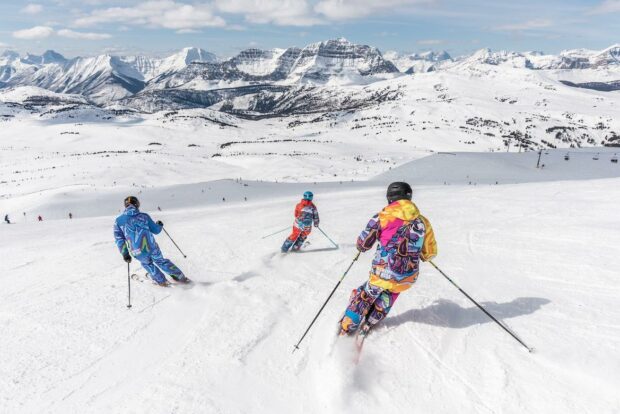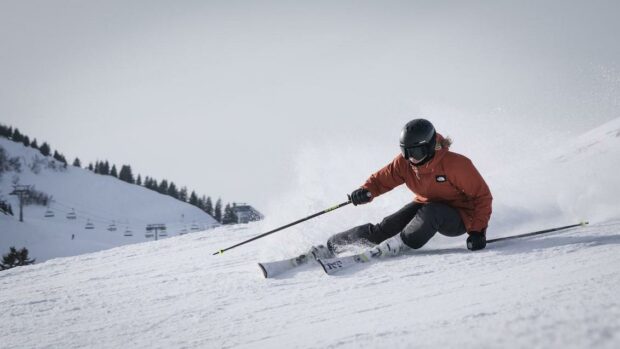Top 6 Ski Tips You Will Hear Only From Professionals
When it comes to hitting the slopes and embracing the exhilarating world of skiing, learning from professionals can make all the difference. Seasoned skiers who have dedicated their lives to the sport possess a wealth of knowledge and invaluable tips that can transform your skiing experience. While beginners often receive standard advice on form and technique, this list delves into the lesser-known insights shared exclusively among professionals.

By incorporating these top six ski tips into your skiing repertoire, you’ll elevate your skills and gain a competitive edge on the mountain. From mastering advanced techniques to optimizing your equipment, these exclusive tips will help you unlock new levels of performance and enjoyment as you carve through the snow. So, buckle up your boots, strap on your skis, and get ready to explore the secrets known only to the most seasoned skiing professionals.
Mastering Weight Distribution
Mastering weight distribution is a fundamental skill that plays a crucial role in the art of skiing. Understanding and controlling weight distribution can greatly enhance your balance, stability, and overall control on the slopes. When you distribute your weight properly, you create a strong and stable platform that allows you to respond effectively to changes in terrain and snow conditions. It enables you to maintain control over your skis and execute precise movements with fluidity. By mastering weight distribution, you’ll be able to navigate steep descents, carve sharp turns, and tackle challenging slopes with confidence and ease.
This skill is essential for both beginner skiers looking to establish a solid foundation and advanced skiers aiming to take their technique to new heights. Additionally, crosscountry ski boots are a crucial component of your gear when engaging in cross-country skiing. These specialized boots are designed to provide comfort, warmth, and efficient power transfer while allowing for flexibility and mobility on the trails.
Utilizing Pole Planting Techniques
Utilizing pole planting techniques is a valuable skill that professionals rely on to enhance their skiing performance. Pole planting involves the strategic placement of ski poles during turns and transitions, serving multiple purposes on the slopes. By planting the pole firmly in the snow ahead of each turn, skiers can establish timing, rhythm, and balance. This technique helps in maintaining proper body positioning, as it assists in initiating turns and providing stability during high-speed descents. Additionally, pole planting acts as a visual and tactile guide, allowing skiers to anticipate and react to changes in terrain
Understanding edge control
Understanding edge control is a critical aspect of skiing that separates professionals from novice skiers. Edge control refers to the ability to effectively engage and manipulate the edges of your skis to navigate various terrain and snow conditions with precision and control. By understanding how to engage the edges of your skis, you can optimize your turning ability, enhance stability, and maximize control throughout each run. Proper edge control involves finding the right balance between the inside and outside edges of your skis. By shifting your weight and angulating your body, you can engage the edges and create a solid connection with the snow. This allows you to carve turns smoothly and efficiently, maintaining a consistent arc and controlling your speed. Additionally, understanding edge control enables you to adapt to different types of snow conditions, such as icy or powder, by adjusting the pressure on your edges accordingly.
Incorporating Dynamic Turn Transitions
Incorporating dynamic turn transitions is a key technique employed by professionals to maintain fluidity and momentum while skiing. Dynamic turn transitions involve smoothly and seamlessly transitioning from one turn to the next, allowing for a continuous and rhythmic flow down the slopes. The key to successful dynamic turn transitions lies in proper body positioning and timing. Skiers aim to initiate the new turn before completing the previous one, creating a seamless and continuous motion. This technique requires precise weight shifting and edge control to efficiently transfer from one set of edges to the other. By incorporating dynamic turn transitions, skiers can maintain speed and control throughout their runs. It allows for efficient use of the mountain’s natural terrain, as skiers can adapt their turns to match the contours of the slope. This technique also enhances overall agility and responsiveness, as skiers can quickly adjust their turn shape and radius to navigate varying conditions or obstacles on the mountain.

Maximizing Flexibility and Range of Motion
Maximizing flexibility and range of motion is a crucial aspect of skiing that professionals prioritize to enhance their performance on the slopes. Skiing requires a wide range of movements, including bending, twisting, and extending, which are facilitated by optimal flexibility. Improving flexibility and range of motion offers several benefits to skiers. Firstly, it allows for greater maneuverability and agility, enabling skiers to navigate through tight turns and challenging terrain with ease. Enhanced flexibility also helps in maintaining balance and stability, as it allows skiers to absorb bumps and uneven surfaces more effectively. To maximize flexibility, skiers can incorporate stretching exercises and targeted workouts into their training routines. Dynamic stretching routines that focus on the lower body, such as leg swings and lunges, can help warm up and increase flexibility in key muscle groups used in skiing, such as the hips, thighs, and calves. Additionally, incorporating exercises that improve core strength and stability can further enhance flexibility and overall skiing performance.
Equipment Optimization
Equipment optimization is a crucial factor in skiing performance, and professionals prioritize having the right equipment to suit their needs and skill level. Skiing equipment includes skis, boots, bindings, and poles, and each component plays a critical role in determining how efficiently and effectively a skier can navigate the slopes. To optimize their equipment, professionals consider factors such as ski length, stiffness, and width, as well as boot flex and binding release values. They choose equipment that matches their skill level, preferred skiing style, and the terrain they plan to ski on. Having properly fitted equipment can significantly impact skiing performance, as it allows for better control, balance, and maneuverability. Properly fitting boots, for example, can help prevent foot and ankle pain and reduce the risk of injury, while appropriately sized skis can improve turn initiation and edge control.
In conclusion, learning from professionals in skiing can have a transformative impact on your skills and overall experience on the slopes. The exclusive ski tips shared by professionals provide invaluable insights that go beyond the standard advice typically given to beginners. By mastering weight distribution, utilizing pole planting techniques, understanding edge control, incorporating dynamic turn transitions, maximizing flexibility and range of motion, and optimizing your equipment, you can elevate your skiing abilities to new levels.
